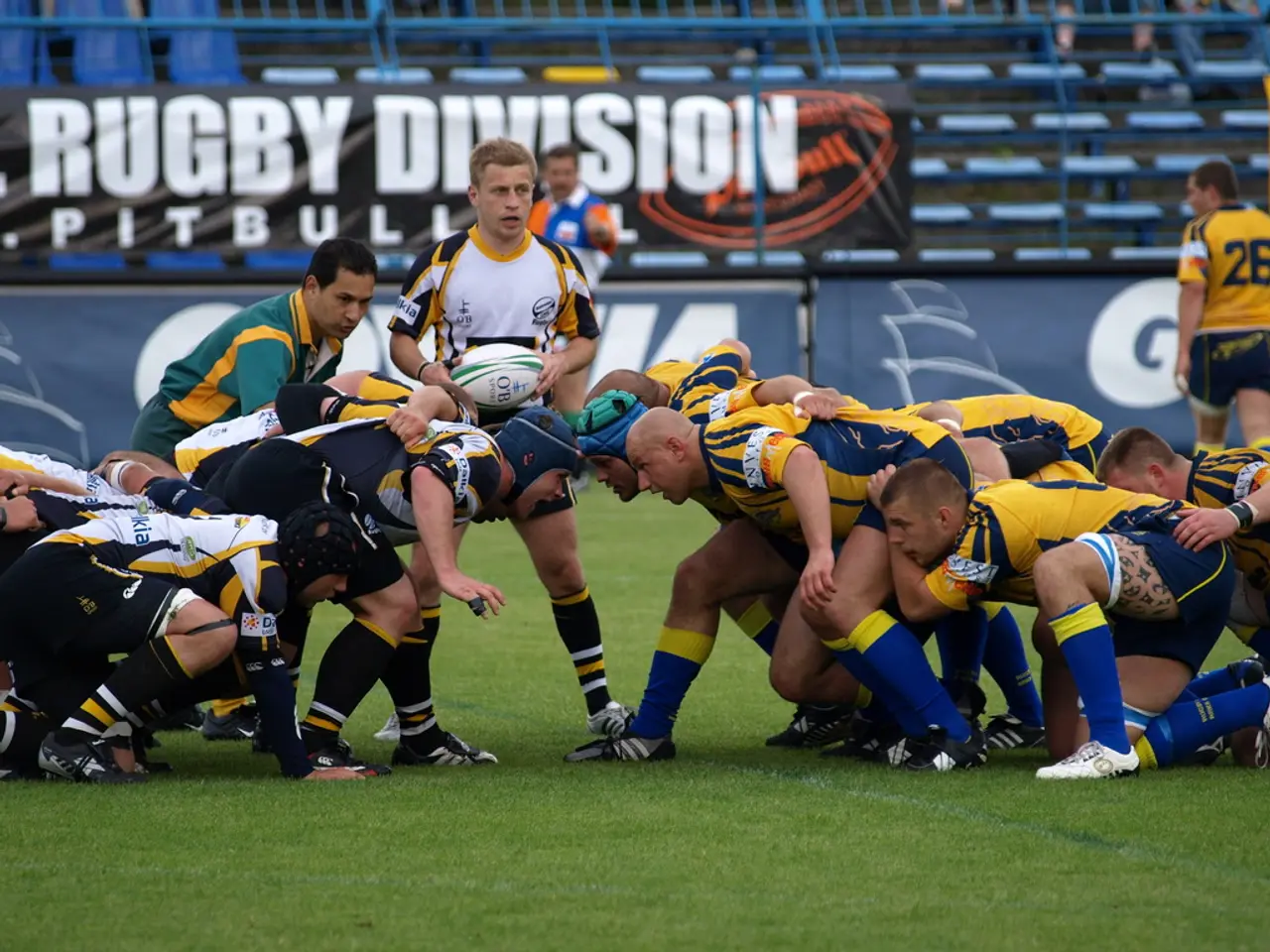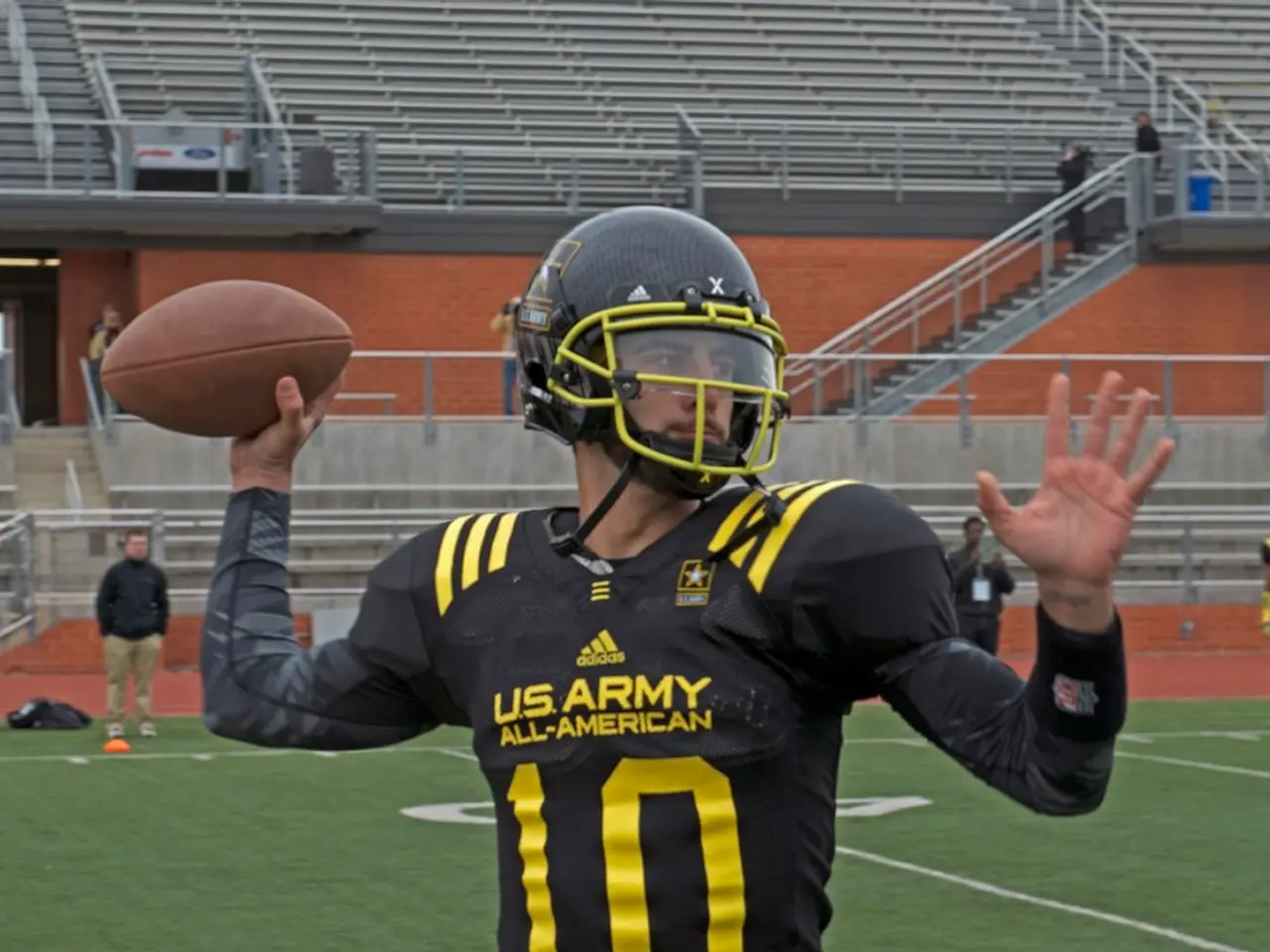Sports Sponsorship's Transformation: The Creative Ways Companies Tie into Sports Events
Corporate sponsorship in sports has transformed from a modest beginning to a complex, multi-billion-dollar global industry deeply intertwined with media, marketing, and celebrity culture. The journey began in the early 1970s, with minor English football competitions like the Watney Cup and Texaco Cup featuring sponsors, marking the early integration of corporate funding in sports events.
In the 1980s, sponsorship deals became common in major sports competitions such as English football leagues. Sponsorship transformed from simple brand visibility to strategic partnerships, with sports organizations benefiting from financial support that enabled them to fund events while offering sponsors brand recognition and loyalty through naming rights and logo placements.
A major shift occurred with the emergence of athlete-centered sponsorships. The groundbreaking Nike contract with Michael Jordan in the 1980s exemplified this evolution. Rather than just endorsing products, Jordan became a business partner with his own signature shoe line, which generated $126 million in the first year alone and has since created over $19 billion in revenue with ongoing royalties. This model set the industry standard, emphasising athletes as lifestyle brands and cultural icons rather than mere sports figures.
The mass media's rise was pivotal in expanding the reach and impact of sports sponsorship. Televised sports broadcasts, like the NBA’s lucrative TV deals worth billions annually, showcased athletes and competitions to global audiences, magnifying the value and exposure for sponsors. Merchandising tied to sponsorship, such as selling sports apparel featuring both team and sponsor logos, further enhanced revenue streams and fan engagement.
By the late 20th century, sponsorship revenue had become substantial; for instance, the UK government in 1997 acknowledged that revenue from sports sponsorship and advertising exceeded £300 million annually. Today, brands invest in sports sponsorships for various reasons, such as engaging with their target audiences, associating with positive values, building brand awareness, and enhancing their overall image.
Brands may offer funding and endorsements in exchange for naming rights of sports facilities, such as Wrigley Field. Bud Light has been the "Official Beer Sponsor of the NFL" for nearly three decades, while Coca-Cola began its first partnership with the Olympics in 1928, which has continued to the present day. Team sponsorships involve businesses paying to display their logos and names on team uniforms, equipment, facilities, and marketing materials.
Sports sponsorship can increase exposure and media coverage for brands, but it does not aim to sell products or services directly. Sporting teams, athletes, or other entities may benefit from sponsorships by receiving funding for new networking opportunities, equipment, facility improvements, and more. Sponsorships can provide financial support to sport entities, helping them invest in resources and develop talent.
Sports sponsorship is an exchange of value between a brand and a sports entity. In recent years, the landscape has evolved further with the advent of college athletes signing endorsement deals, increasing opportunities for athletes and brands to engage in sponsorships. As the industry continues to grow and adapt, it will undoubtedly play a significant role in shaping the future of sports and marketing.
References: [1] "The History of Sports Sponsorship," SportsPro Media, 2021. [Online]. Available: https://www.sportspromedia.com/insights/the-history-of-sports-sponsorship [2] "The Evolution of Sports Sponsorship," Sports Marketing Network, 2020. [Online]. Available: https://www.sportsmarketingsummit.com/the-evolution-of-sports-sponsorship/ [4] "The Impact of Sports Sponsorship on Consumer Behavior," Forbes, 2020. [Online]. Available: https://www.forbes.com/sites/forbesagencycouncil/2020/05/13/the-impact-of-sports-sponsorship-on-consumer-behavior/?sh=3d02a62656d4 [5] "The Role of Media in Sports Sponsorship," SportsPro Media, 2021. [Online]. Available: https://www.sportspromedia.com/insights/the-role-of-media-in-sports-sponsorship
- As the sports sponsorship industry continues to evolve, strategic partnerships between sports organizations and marketing firms have increasingly become integral to the business operations of sports teams and athletes, helping to fund events while offering sponsors brand recognition and loyalty.
- In the realm of marketing, sports sponsorship comes with various benefits for brands, as they can associate with positive values, build brand awareness, and enhance their image, especially considering the high exposure offered by major sports competitions and events.






